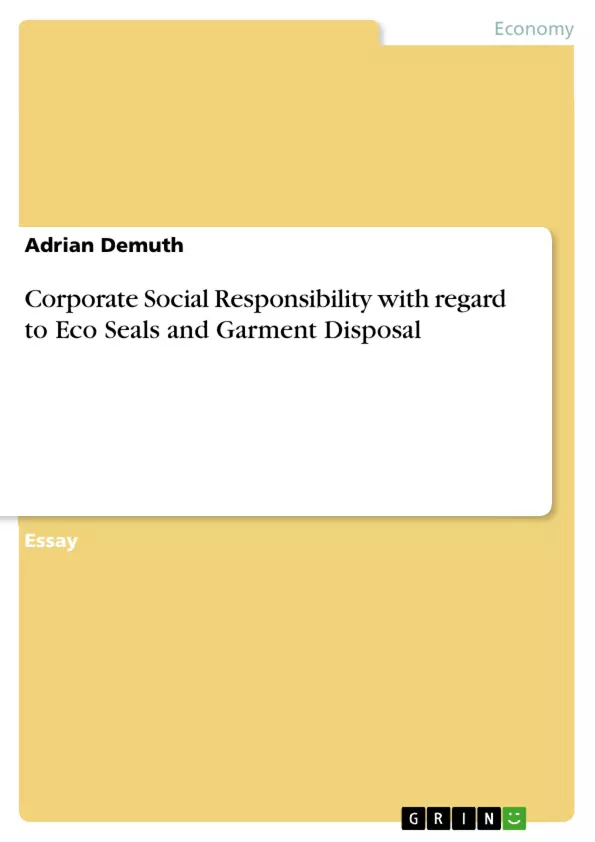In this paper, it is looked at how the consumer can even use eco-labels to see in which respect a garment was manufactured under sustainable conditions. Likewise, the most important fibers needed in the manufacture of clothing are identified, explained and examined in terms of their sustainable use. Concepts of slow and fast fashion are explained and the company "Kleiderkreisel" will be examined.
Inhaltsverzeichnis (Table of Contents)
- 1. INTRODUCTION - REQUIREMENTS FOR SUSTAINABLE CLOTHING
- 2. ECO-SEALS
- 3. RAW MATERIALS
- 3.1 NATURAL FIBER
- 3.2 CHEMICAL FIBER
- 4. GARMENT DISPOSAL - OLD CLOTHES CONTAINER
- 5. FLEA MARKETS ARE BECOMING DIGITAL - INTERNET PLATFORM “KLEIDERKREISEL”
- 5. CONCLUSION
Zielsetzung und Themenschwerpunkte (Objectives and Key Themes)
This project aims to examine the aspects of sustainable clothing, extending beyond production to encompass the entire lifecycle of a garment, from purchase to disposal. The research investigates the concept of eco-seals and their role in certifying sustainable practices, explores the raw materials used in textile production, examines the issue of garment disposal through old clothes containers, and analyzes the innovative platform “Kleiderkreisel” as a digital solution for clothing exchange.
- Sustainable clothing practices beyond production
- The role of eco-labels in promoting sustainability
- Impact of different raw materials on environmental sustainability
- Effective methods of garment disposal
- Digital platforms for sustainable clothing exchange
Zusammenfassung der Kapitel (Chapter Summaries)
The introduction emphasizes the importance of considering the entire lifecycle of a garment, from production to disposal, when assessing sustainability. It outlines the project's scope, which includes examining different types of fibers, methods of processing clothes, and the impact of consumer choices on the sustainability of garments.
Chapter 2 delves into the world of eco-seals, highlighting their importance in providing information about ethical and sustainable practices in the textile industry. It analyzes four prominent eco-labels: Global Organic Textile Standard (GOTS), natural textile IVN certified BEST seal, and Fair-Wear-Seal, examining their specific requirements, strengths, and limitations in terms of environmental and social sustainability.
Chapter 3 discusses the diverse raw materials used in textile production, specifically focusing on natural and chemical fibers. It explores the sustainability aspects of each type of fiber, considering their impact on the environment and the ethical implications of their production.
Schlüsselwörter (Keywords)
Sustainable clothing, eco-labels, raw materials, natural fibers, chemical fibers, garment disposal, old clothes containers, digital platforms, clothing exchange, “Kleiderkreisel”, sustainable consumption, environmental impact, social responsibility.
- Quote paper
- Adrian Demuth (Author), 2020, Corporate Social Responsibility with regard to Eco Seals and Garment Disposal, Munich, GRIN Verlag, https://www.hausarbeiten.de/document/1362195


